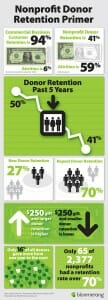Registering your nonprofit for fundraising sends a positive message to your donors. Guest post by James Gilmer
A huge percentage of charities in the United States are raising money unlawfully, and don’t even know it.
Both new nonprofit founders and executives mistakenly believe that recognition as a 501(c)(3)–that is, being exempt from federal income tax–is a “golden ticket” to limitless fundraising. The reality is, forty-one states have an additional registration requirement, which if you ignore, can get your organization in some hot water.
This post is a basic introduction to the subject of charitable solicitation (aka fundraising) compliance. The purpose of the article is to get you thinking about your organization’s credibility, how to avoid penalties, and even impress your donors!
Registering with the State
“Fundraising registration” occurs at the state level, where you file information about your organization’s leadership, financials, and programs with the Attorney General or Secretary of State.
“Compliance” refers to managing registration requirements in each state where you solicit, renewing your annual registration on time, and keeping up with additional corporate filing and registered agent requirements.
Why Comply?
There is a cost to fundraising registration, both in government fees and time, but those costs are easily outweighed by state and federal penalties. We’ve seen fines of over $5,000 for a single infraction in one state. How would a hit like that affect your organization?
Besides fines for failure to register or renew, states can revoke your organization’s state tax exemption, hold officers and directors personally liable for payment, and deny your right to solicit in that state altogether.
At the federal level, you disclose where your organization solicits funds directly to the IRS on your Form 990 tax return. Let’s face it: lying to the IRS isn’t a good idea either!
Fundraising Compliance: What You Gain
The purpose of all this work for you is a good one: to protect citizens of that state from unregulated or illegitimate charities.
Just as you do research on prospective donors before you ask them to give, experienced donors use state databases to look up your nonprofit before they make a contribution, especially if they’ve never heard of you. Many foundations and grantmakers consider state registration an important prerequisite to any funding. Being registered with the state helps reassure donors that they are making a good investment in your organization.
By investing in compliance, you demonstrate your credibility and commitment to the community you serve. To learn more about specific fundraising registration requirements in your state, visit this Fundraising Compliance Guide.
Happy fundraising!
Author Bio: James Gilmer is a compliance specialist for Harbor Compliance, which establishes 501(c) nonprofits and helps them stay compliant. Harbor Compliance assists charities in every state and several countries abroad. James serves on the Board for two nonprofits in Lancaster, Pennsylvania.

